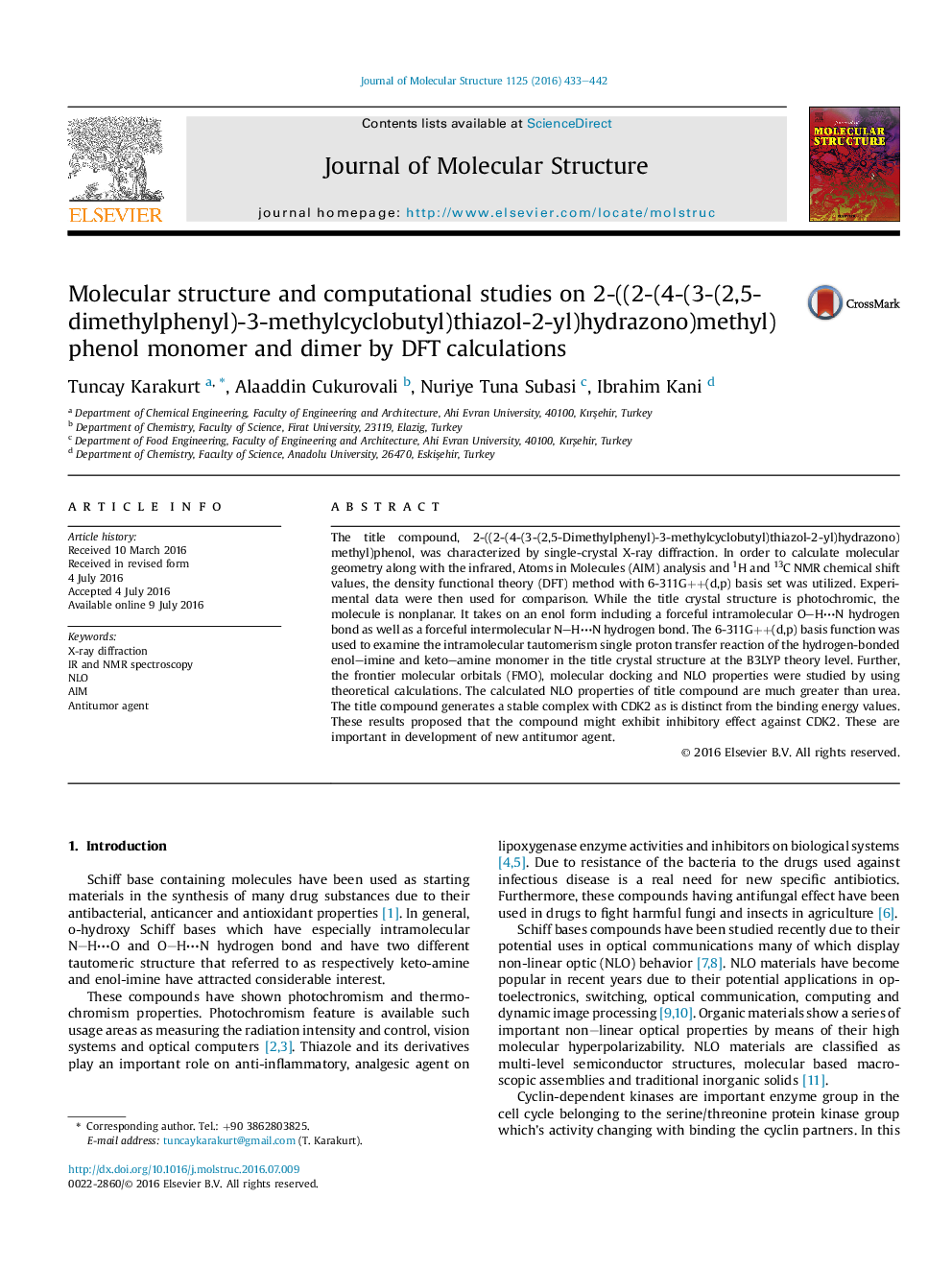| Article ID | Journal | Published Year | Pages | File Type |
|---|---|---|---|---|
| 1400957 | Journal of Molecular Structure | 2016 | 10 Pages |
•IR and NMR spectra of the title compound was recorded and compared with the theoretical results.•The computed value of first hyperpolarizability have been also predicted.•The complete assignments are performed on the basis of the potential energy distribution (PED).•Hyperpolarizability, HOMO and LUMO energies were calculated.•Molecular docking study was performed of the title compound.
The title compound, 2-((2-(4-(3-(2,5-Dimethylphenyl)-3-methylcyclobutyl)thiazol-2-yl)hydrazono)methyl)phenol, was characterized by single-crystal X-ray diffraction. In order to calculate molecular geometry along with the infrared, Atoms in Molecules (AIM) analysis and 1H and 13C NMR chemical shift values, the density functional theory (DFT) method with 6-311G++(d,p) basis set was utilized. Experimental data were then used for comparison. While the title crystal structure is photochromic, the molecule is nonplanar. It takes on an enol form including a forceful intramolecular OH⋯N hydrogen bond as well as a forceful intermolecular NH⋯N hydrogen bond. The 6-311G++(d,p) basis function was used to examine the intramolecular tautomerism single proton transfer reaction of the hydrogen-bonded enol–imine and keto–amine monomer in the title crystal structure at the B3LYP theory level. Further, the frontier molecular orbitals (FMO), molecular docking and NLO properties were studied by using theoretical calculations. The calculated NLO properties of title compound are much greater than urea. The title compound generates a stable complex with CDK2 as is distinct from the binding energy values. These results proposed that the compound might exhibit inhibitory effect against CDK2. These are important in development of new antitumor agent.
